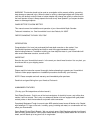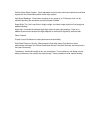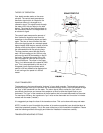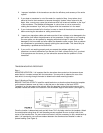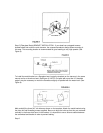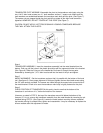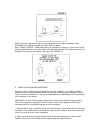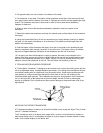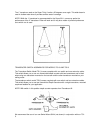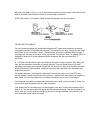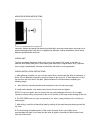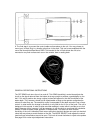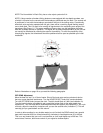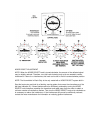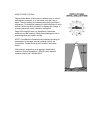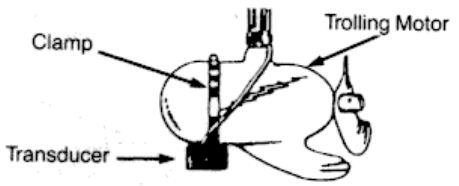
3. Put approximately one inch of water in the bottom of the boat.
4. Put transducer in the water. The bottom of the transducer should be in a flat area and should
be in good contact with the bottom of the boat. 5. Operate the unit with the boat operating at high
speed. The transducer may have to be moved in order to find an area where satisfactory
operation is observed.
6. When an area is found that produces satisfactory operation, mark the location of the
transducer.
7. Remove the water and transducer and clean the marked area and the bottom of the transducer
thoroughly.
8. Using the Humminbird Epoxy Kit mix an ample amount of epoxy without causing it to bubble
and pour it in the area the transducer is to be mounted. The puddle should be larger than the
bottom of the transducer.
9. Coat the bottom of the transducer with epoxy, then put in the center of the puddle and push
down on transducer while moving it around in a circular motion. This forces out any air bubbles
that may be trapped between the bottom of the transducer and the hull of the boat.
10. Let epoxy cure then the transducer is ready to operate. No water is now required in the
bottom of the boat and gas and oil that is spilled inside of the boat will not degrade performance
as it will if the transducer is placed only in water. Caution: Do not use silicone seal or any soft
adhesive to bond the transducer to the hull. This will reduce the sensitivity of the unit.
3. TROLLING MOTOR MOUNTING PROCEDURE
A "Trolling Motor Transducer," is designed to be mounted on the foot of the trolling motor with the
aid of an adjustable clamp, included standard (see below). Your trolling motor transducer will give
an excellent reading with no interference from the electric motor. Some boat manufacturers are
now glassing in a second transducer beneath the front deck for thru the hull reading of the
forward mounted depth sounder. This installation also serves a dual purpose in that a fisherman
can run his big motor at idle speed and use his front depth sounder to scan for submerged
stumps or obstacles. Such a practice can often prevent damage to props and lower units of the
big outboard.
MATCHING THE PROPER TRANSDUCER
A 2" diameter transducer is used on all Humminbird flasher units, except the Super Thirty II which
uses a 1" diameter transducer.
The 2" transducer emits a 16 degree cone angle which, we feel, is most efficient for medium to
deep range flasher units. It concentrates the signal on a given target for a better medium to deep
return, thus a better display on the flasher dial.



